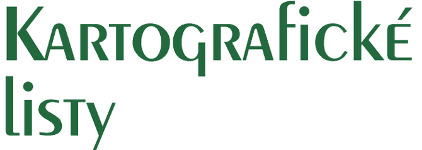Viktor CHABANIUK, Olexandr DYSHLYK
Prierezové kartografie: jazyková paradigma v minulosti, súčasnosti a budúcnosti
Chabaniuk, V., Dyshlyk, O.: Crosscutting cartographies: Language paradigm in past, now, and in future. Kartografické listy, 2024, 32 (1).
Abstract: “Crosscutting cartographies” notates conceptions and/or paradigms of cartography “perpendicu-lar” in some sense to classic “subject” cartographies, such as the Communication paradigm. The examples in the “Western” scientific literature are Bungeʼs Metacartography and Tobler's Analyti-cal cartography. We are naming also as crosscutting cartography the Language conception. A. Lyuty and J. Pravda, among others, were engaged in the research of the latter at the end of the last century in Eastern Europe. In our century, the Language conception did not evolve. There are on-ly certain practical achievements that do not correspond yet to the level of theoretical achievements of the predecessors. Notions of conception and paradigm of cartography in this article do not dif-fer. The purpose of the article is to restore due attention in the cartographic community to the Language paradigm, and with it to crosscutting cartographies. This purpose is important because the latter was and remains extremely important for the evolution of cartography as a science. The authors believe that in the near future the Language paradigm will evolve and, in many ways, thanks to this, the theory of system cartography will be created. The theory can become a “Carte-sian multiplication” of some subject cartography and corresponding crosscutting cartography. Candidates for such subject cartography are updated Analytical cartography or Model cartog-raphy. Contenders for an appropriate crosscutting cartography are an updated Language paradigm or perhaps an updated Relational cartography. The work researched the evolution of the carto-graphic language and language of maps as the most important components of the Language para-digm. Aslanikashviliʼs cartographic method is used to research language structures that pre-vailed in the past. In particular, Ramírez's cartographic language is analyzed and its similarity to one of the two sublanguages of Lyutyʼs language of maps is shown. To study the state of the modern evolution of the Language paradigm, the so-called system cartographic method is used. It is a system generalization of the “classic” cartographic method of Aslanikashvili. First, it helps to explain a modern modification of Lyutyʼs “map making-using” system model. Then this meth-od is used to find similarities between the classic Cartographic languages shown on the famous Kolachny’s scheme and the constructions of Relational cartography. The system generalization of Aslanikashviliʼs cartographic method is also used to analyse the future evolution of the subject of this article. We see the future of Language of maps and Language paradigm in combination with Relational cartography and/or in integration with Model Based Engineering. In both cases, the re-sult should be System cartography, in which the updated Language of maps and Language para-digm should be important parts. The results of the evolution of the Language paradigm described in the article assure that the latter should be and will be revived. In addition to its own need, it has every chance to become the second component of the Cartesian multiplication of one of the sub-ject cartographies and the corresponding crosscutting cartography for the creation of System car-tography. That is, such multiplication can become an analogue of System cartography, which can be the theory of cartography, still missing now.
Keywords: crosscutting cartographies, language conception/paradigm, overview the evolution: past, present and future

